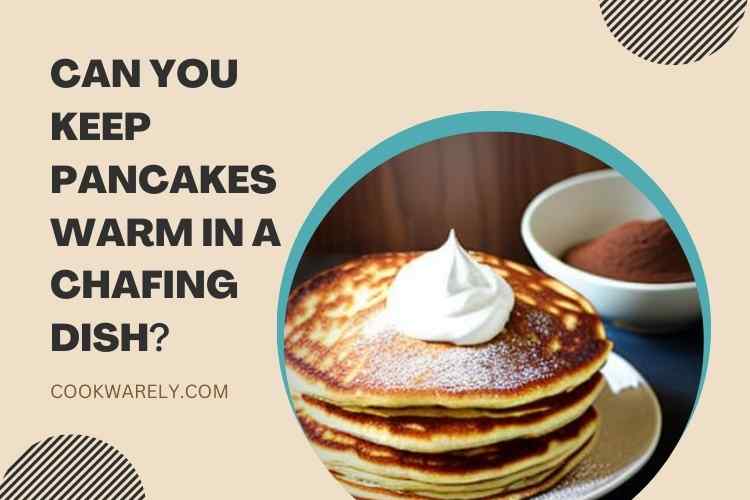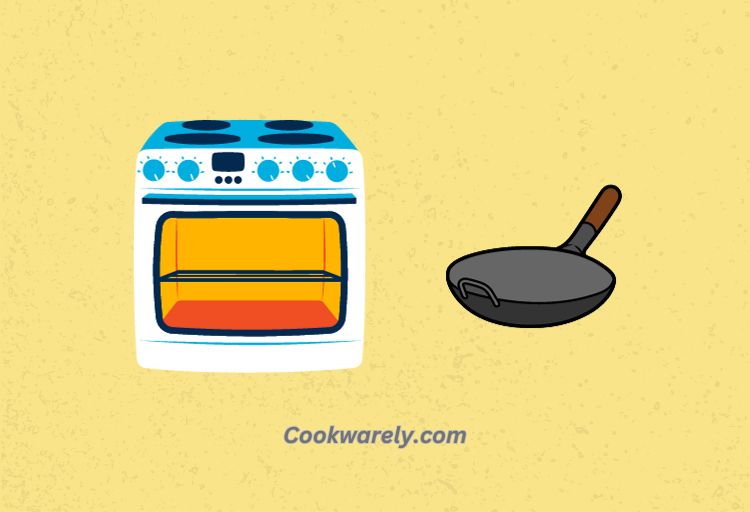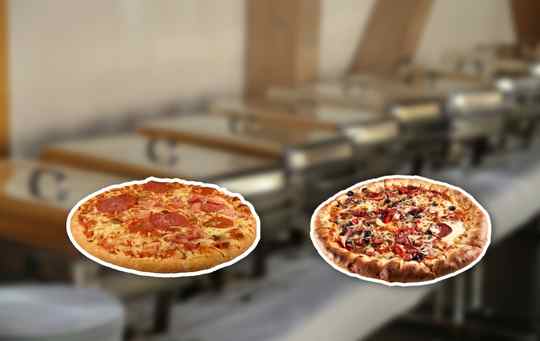Can You Put Bread In A Chafing Dish?
Chafers are used for many purposes, from storing warm bread to serving dips. These cooking vessels are also popular during holiday feasts.
Can You Put Bread In A Chafing Dish? Yes, you can put bread in a chafing dish. A chafing dish is a type of food warmer that uses a heat source to keep food warm. It is typically used to warm food during meal service, such as at a buffet. Bread can be placed in the chafing dish to keep it warm and fresh for a specific time period.
Chafing dishes can also be used to cook half-baked dishes, such as wine-braised beef brisket. This way, the bread will stay warm and not become dry.

Can You Put Bread In A Chafing Dish?
Bread can be placed in a chafing dish, but it is not ideal for keeping it warm in this pan. The bread will become hard and dry if left in the chafing dish for too long.
Bread is often kept in a chafing dish because it is a food that is often served warm. When the bread is served warm, it is softer and easier to eat. When the bread is served cold, it can be hard and difficult to eat.
There are many other reasons to keep bread in a chafing dish. For example, if you are serving many people, you can keep the bread in the chafing dish and let everyone serve themselves. This can help to avoid a messy bread basket.
Another reason to keep bread in a chafing dish is to keep it from getting stale. If you are not going to eat all the bread right away, keeping it in a chafing dish can help to keep it fresh and soft.
Can you keep bread warm in a chafing dish?
A chafing dish is a portable pan that can be used to keep a variety of foods warm. Like a bain marie, a chafing dish uses water to transfer heat.
Because of this, food stays hot and fresh in a chafing dish, while preventing bacteria from forming. They are also ideal for buffet-style parties.
Chafers are useful for keeping dips and bread warm. They are also an essential item for holiday feasts.
Chafers are perfect for holding a buffet of foods and look great in the food display. Many dishes can be cooked in half-pans and then transferred to chafers.
Why its important to keep bread in chafing dish?
Chafing dishes are used to keep food warm. They’re not oven-safe, but they can be a great way to maintain food temperature.
They also prevent food from drying out and use water as a heat-transfer medium. They also have lids to prevent food from overheating.
Bread is a valuable commodity in a buffet, and a chafing dish allows you to keep it fresh and warm. This is especially helpful if you’re serving hot sandwiches or buns. The dish also allows the bread to steam, which keeps it warm.
Chafing dishes have many benefits for catering. They allow you to keep foods warm for hours without worrying about them getting cold.
They also prevent food from drying out or absorbing odors. Chafing dishes are great for keeping food warm on a buffet, and some are fancier.
Will bread get dry inside chafing dish?
Chafing dishes are popular items in food service establishments. However, there are guidelines to follow when using them. First, add a minimum amount of water to the bottom pan before lighting a fuel burner. Also, don’t allow the dish to get too hot and dry.
Chafing dishes are typically used for baking, but you can also use them for cooking. For example, you can bake lasagna in a chafing dish with an insert pan. In addition, you can put a pan of water inside the dish and bake your lasagna.
Chafing dishes are also known as catering dishes. The name comes from the French word chauffeur, which means “to warm up.” This type of dish uses indirect heat to keep the food warm for longer.
The fuel that heats the pan below is placed in a wick, which is placed in a metal dish below the chafer. This metal dish is an excellent conductor of heat. Chafing dishes are also great for reheating cold food.
How long should you keep bread in chafing dish?
A few factors should be considered before storing bread in a chafing dish. First of all, you should avoid placing it in a dish that will be too hot or too cold.
If you do decide to use a chafing dish to store bread, ensure that it is made of a quality material and that you use a heat-resistant cover.
Second, you should avoid submerging the chafing dish in water for long periods. Chafing dishes are made from stainless steel, so you do not want to use them in water for a prolonged period. Third, you should avoid using dish soap and other harsh cleaning agents.
Another tip when cooking food in chafing dishes is to add water periodically. This helps to keep the food moist so it doesn’t burn or get stale. You should also stir the food occasionally.
Can You Bake in Chafing Dish?
It is generally not recommended to bake in a chafing dish as most chafing dishes are designed for holding and serving cooked food that has already been prepared. While chafing dishes are designed to keep food warm, they are not typically designed to handle the high temperatures and direct heat required for baking.
If you want to bake food for an event, it would be better to use a regular oven and when the food has been cooked, you can place it in a chafing dish to be served and kept warm.
However, some chafing dishes are marketed as oven-safe and may be used for baking. These chafing dishes are typically made of materials that can withstand high temperatures such as stainless steel or cast iron. If you have a chafing dish that is marketed as oven-safe, you should always consult the manufacturer’s instructions and follow their recommendations for use.
In general, it is best to use chafing dishes as they are intended, which is for keeping cooked food warm, and not for baking.
FAQs
How to Keep Bread Warm on a Buffet
To keep bread warm on a buffet, use a chafing dish or warming tray with a cover, or wrap it in foil and place it in a preheated oven at a low temperature.
How to Keep Rolls Warm on a Buffet
To keep rolls warm on a buffet, use a warming drawer, chafing dish, or warming tray, and cover them to prevent drying out.
How to Serve Buns at a Party
To serve buns at a party, display them on a decorative platter or tray, offer a variety of condiments and toppings, and consider labeling specialty buns for dietary preferences.






